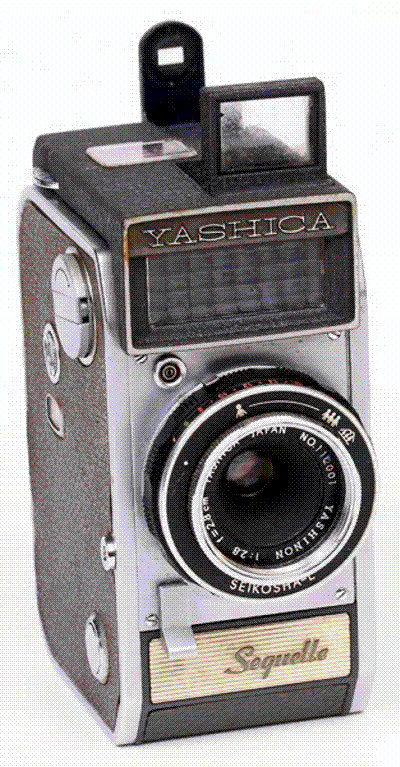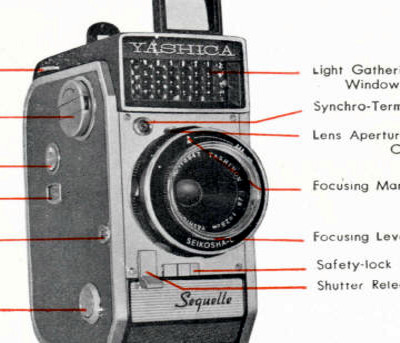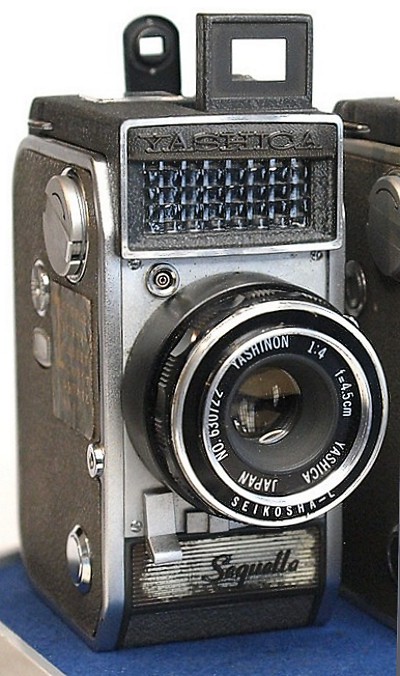

YASHICA SEQUELLE
(1962) Here is a horse of a different color. It is a vertically-styled camera that looks similar to an 8mm movie camera -- only wider. It has a 28mm, manually-focusing (f2.8-22) lens with idiot symbols instead of feet/meter distance marks. The exposure system is metered-manual. First, the film speed (10 to 800) is dialed into the selenium meter. When the camera is pointed at the subject the meter displays an EV number in a window on top of the camera. This number is then dialed into an "exposure" ring on the lens. The shutter speed (1/30 - 1/250, plus B) is set when the film speed is dialed in, and then the aperture fine-tunes the exposure when the EV number (8-17) is dialed in. The f-stops (f2.8-22) are displayed on the exposure ring, but they are very hard to see. For flash use, the "exposure" ring around the lens is set to the "FLASH" mark and a separate lever allows you to select the desired f-stop. The shutter is set to 1/30 for flash use. The exposure ring also has a B setting which allows manually setting the f-stop for long exposures. This is the same set-up that the original Canon Demi half-frame used. There are no manual settings of the shutter speed, except B and FLASH (1/30). The Sequelle also sported a unique battery-powered, built-in motor drive for advancing the film. There is no way to advance the film manually. In order to use the camera you'll need the motor-drive battery holder which takes three AA batteries and fits into the back of the camera where film normally goes. You'll also need the special film take-up spool, which slides into the other side of the camera with the film. Viewing is through a pop-up sports finder. It has a tripod socket, cable release socket and PC contact built in -- but no built-in flash shoe, but a handy accessory hand grip screwed into the tripod socket for easy use. Other accessories included an unusual lens shade and a cap for the selenium meter -- which basically turns it OFF.
An updated version appeared shortly after its inauguration in 1963(?). Because the camera had automatic, motorized, film advance, if the shutter release was pressed accidentally, a lot of pictures could be taken unintentionmally. To prevent this situation, Yashica added a small, sliding lever, "SAFETY LOCK" underneath the lens. There were a few, hard-to-notice, minor, cosmetic changes as well.

Also, a rare version of the Sequelle with a 4.5cm f4.0 "long" lens was made for police use. This model has only been seen with the "SAFETY LOCK", but besides the change in the lens, the viewfinder was modified (of course) to reflect the new perspective of the lens. This camera was designed to take "mug shots", so a portrait-length lens was needed. The lens was fixed-focus, and the pictures were taken with a flash, so the exposure would always be the same f-stop -- unless a different speed film or flash was used.
